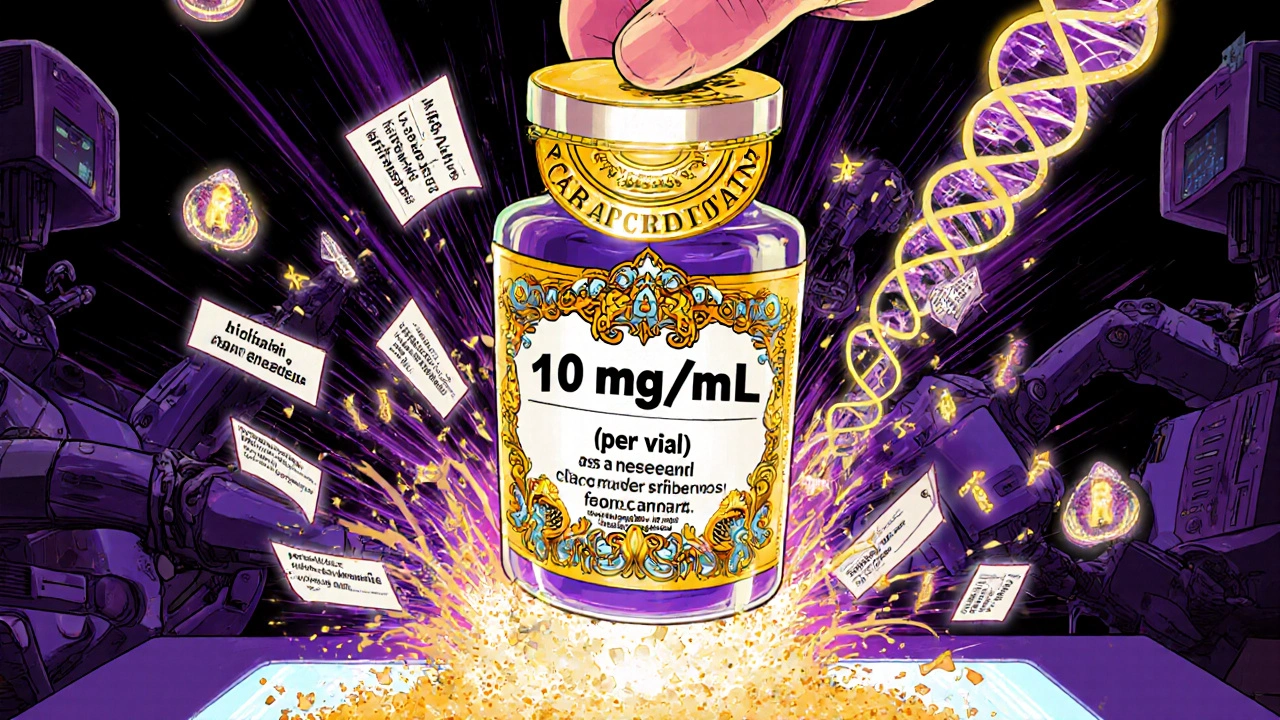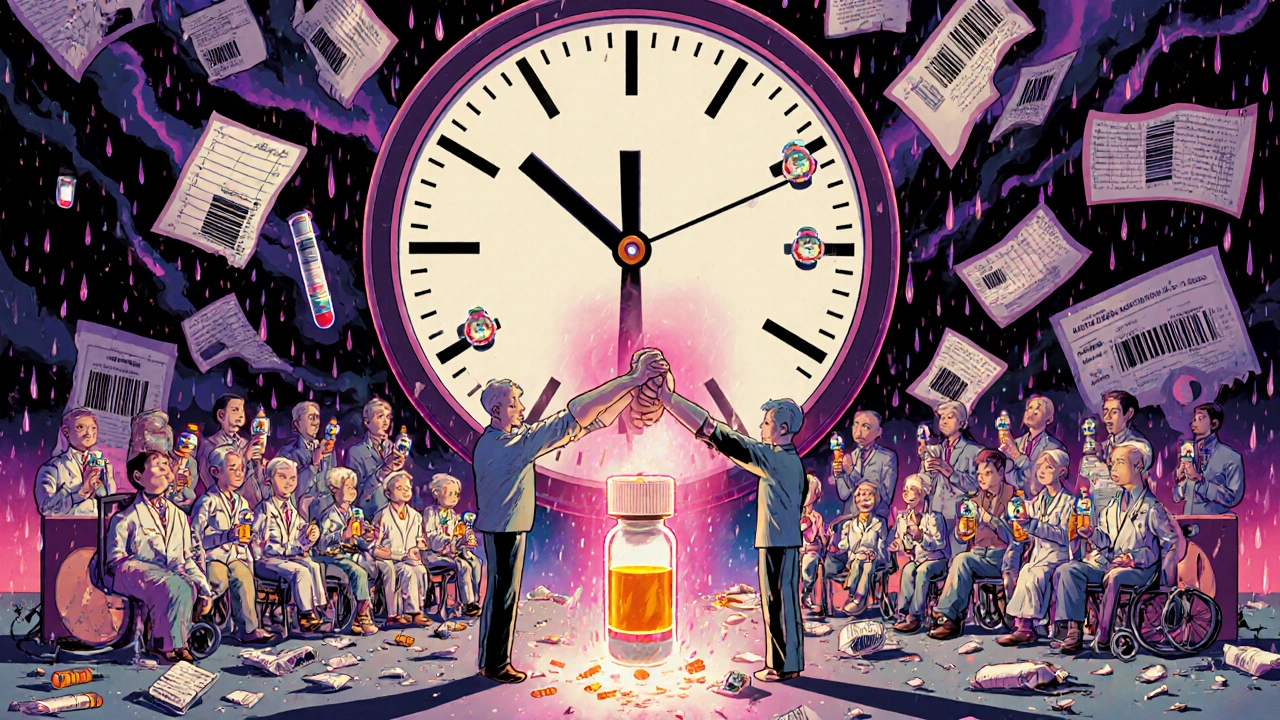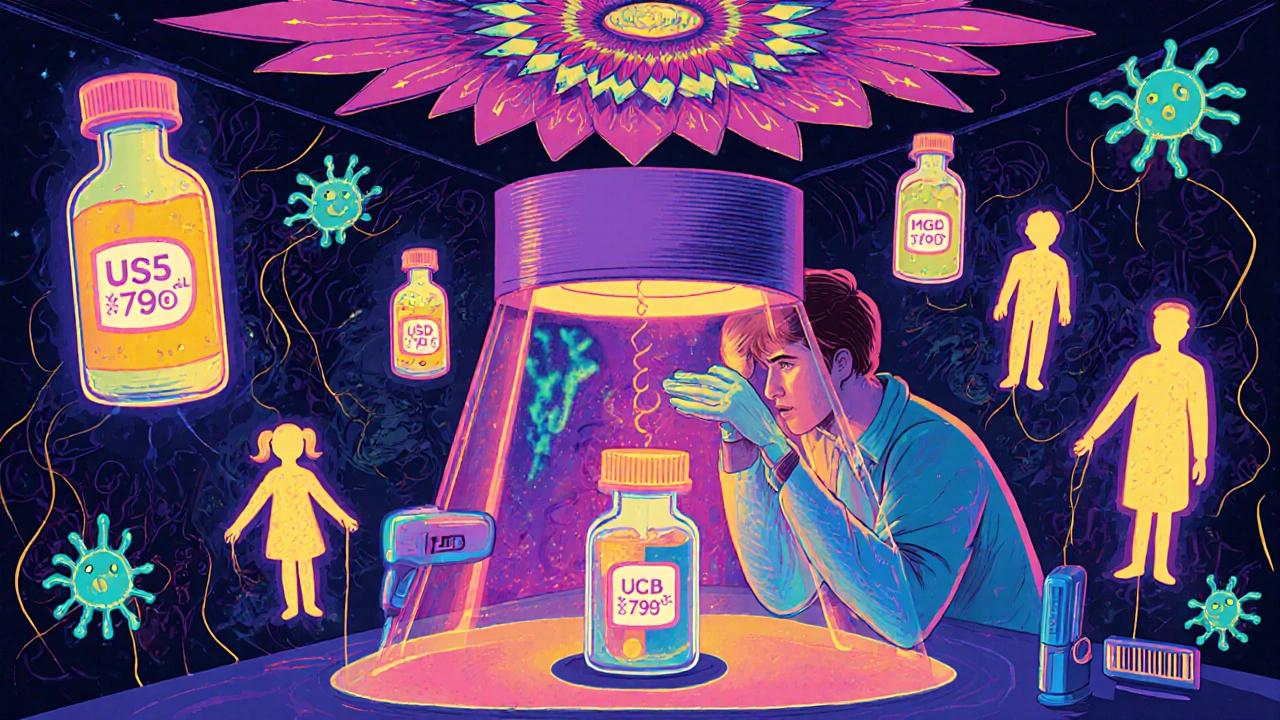Customized medications aren’t just a niche service-they’re life-saving for thousands of patients who can’t take mass-produced pills. Kids who need tiny doses of thyroid medicine. Adults allergic to dyes or gluten. Seniors who can’t swallow tablets but need their blood pressure drug in liquid form. These aren’t hypotheticals. They’re real people, and their safety depends on one thing: how well the pharmacy prevents compounding errors.
Every time a pharmacist mixes a custom dose, they’re making a decision that could mean the difference between healing and harm. A misplaced decimal. A mislabeled concentration. A contaminated vial. These aren’t just mistakes-they’re preventable tragedies. The 2012 NECC outbreak killed 64 people because of contaminated steroid injections. That wasn’t an accident. It was a system failure. And it’s still happening today, just on a smaller scale.
Why Compounding Errors Happen-And Why They’re So Dangerous
Unlike FDA-approved drugs, compounded medications skip clinical trials. They’re made one batch at a time, often by hand. That means there’s no safety net. No large-scale testing. No guarantee the pill you’re holding has the right amount of active ingredient.
Studies show 3% to 15% of compounded prescriptions have significant strength deviations. That might sound low, but consider this: if a pharmacy fills 1,000 compounded scripts a month, that’s 30 to 150 potentially dangerous doses. One of those could be a child getting 10 times the intended dose of a sedative because the label said ‘5 mg per container’ instead of ‘5 mg per mL.’ That’s what happened to a geriatric patient in 2022-she ended up in the ICU with serotonin syndrome.
And it’s not just about dosage. Contamination is a silent killer. If you’re making sterile injectables in a room that’s not clean enough, you’re not just risking infection-you’re risking meningitis, sepsis, or death. The USP <797> standards exist for a reason: to stop that from happening.
The Core Rules: USP <795>, <797>, and <800>
If you’re compounding medications, you’re legally required to follow USP guidelines. Not recommended. Not suggested. Required.
USP <795> covers non-sterile compounding-things like creams, capsules, and oral liquids. The rules are clear: you need a dedicated clean room with ISO Class 8 air quality. No clutter. No open food. No personal items. Every surface must be cleaned and disinfected before and after each batch. And you can’t just wing it-documentation is non-negotiable. Every ingredient, every lot number, every step must be recorded.
USP <797> is stricter. It’s for anything you inject, infuse, or put into the eyes. That means sterile technique. That means a laminar airflow hood. That means staff must pass media fill tests twice a year to prove they can work without contaminating the product. And it means the room must be monitored daily for particles and microbes. If your facility doesn’t meet ISO Class 5 standards for the primary compounding area, you’re not just cutting corners-you’re putting lives at risk.
USP <800> protects staff and patients from hazardous drugs-like chemotherapy or hormone therapies. Gloves aren’t enough. You need a ventilated cabinet, proper disposal, and training on how to handle spills. One wrong move with a fentanyl-based compound, and you’re exposing yourself and your team to lethal doses.
These aren’t suggestions. They’re the minimum. And if you’re not following them, you’re operating illegally.
Dual Verification: Your Most Powerful Tool
One person checking their own work isn’t enough. Never has been. Never will be.
The American Society of Health-System Pharmacists (ASHP) says it plainly: all calculations, formulations, and final products must be verified by a second qualified pharmacist. Not a technician. Not a student. A licensed pharmacist with the same level of training.
Here’s how it works in practice:
- Pharmacist A prepares the prescription: measures ingredients, calculates dose, labels the container.
- Pharmacist B independently recalculates the dose using a different method-maybe a digital calculator, maybe a manual formula.
- Pharmacist B checks the ingredient labels against the prescription and the master formula.
- Pharmacist B verifies the final product’s appearance, smell, and consistency.
- Both sign off. No exceptions.
This isn’t about trust. It’s about human error. We all make mistakes. Even the best pharmacists. A 2022 study showed that when dual verification was used, error rates dropped by 40%. That’s not a minor improvement. That’s a life-saving protocol.

Technology That Actually Works
There’s a myth that compounding is a low-tech field. That’s outdated. The best pharmacies today use software that catches mistakes before they happen.
Tools like Compounding.io and PharmScript aren’t just digital notebooks. They’re safety nets. They auto-calculate doses based on patient weight, check for drug interactions, flag expired ingredients, and prevent duplicate orders. One pharmacy in Ohio cut calculation errors by 87% after switching to AI-powered verification software called CompoundingGuard AI.
Barcode scanning is another game-changer. Before you open a bottle of active ingredient, scan its barcode. The system cross-checks it against the prescription. If it’s wrong-say, you grabbed fentanyl instead of tramadol-it stops you. No exceptions. No bypasses. University of Tennessee Health Science Center saw a 92% drop in ingredient misidentification after implementing this system.
And don’t forget electronic batch records. Paper logs get lost. They’re messy. They’re easy to fake. Digital records are timestamped, signed, and stored securely. They’re also required if you’re seeking PCAB accreditation.
Training Isn’t Optional-It’s Lifesaving
Skills decay. Fast.
Pharmacists who haven’t compounded in six months forget how to do aseptic technique. Technicians who haven’t been tested in a year might not recognize a contaminated hood. That’s why quarterly competency assessments aren’t bureaucracy-they’re survival.
Dr. Henry Cohen, former president of the International Academy of Compounding Pharmacists, says it bluntly: ‘The single most effective error prevention strategy is rigorous staff training with mandatory competency assessments conducted quarterly.’
Here’s what that looks like in real terms:
- 40+ hours of initial training on USP standards, calculations, and equipment
- 8-12 hours of continuing education every year
- Quarterly hands-on drills: sterile technique, emergency spill response, calculation challenges
- Annual recertification on all equipment, including hoods, balances, and analyzers
And it’s not just about the pharmacist. Every tech, every assistant, every person who touches the product needs training. One slip-up by a non-pharmacist can undo months of safety protocols.
Labeling: The Silent Killer
One of the most common causes of compounding errors? Bad labels.
Between 2018 and 2022, the FDA recorded 27 overdose incidents tied to unclear concentration labels. One said ‘10 mg per vial.’ But the vial held 10 mL. The patient got 100 mg instead of 10 mg. That’s 10 times the dose. That’s fatal.
The FDA’s 2023 draft guidance now requires all compounded medications to use standardized labeling: ‘mg/mL’-not ‘per container,’ not ‘per dose,’ not ‘as needed.’
Here’s what a correct label looks like:
- Drug name: Tramadol Hydrochloride
- Concentration: 10 mg/mL
- Volume: 30 mL
- Total dose: 300 mg
- Beyond-use date: 04/15/2026
- Storage: Refrigerate
- Prepared by: [Pharmacist Name, License #]
No abbreviations. No assumptions. No guesswork.

Accreditation: The Gold Standard
Not all compounding pharmacies are created equal.
PCAB (Pharmacy Compounding Accreditation Board) accreditation is the highest standard in the industry. It’s not easy to get. It takes 12-18 months. It costs $15,000-$25,000. It requires monthly audits, staff training logs, environmental monitoring records, and proof of dual verification.
But here’s the kicker: accredited pharmacies have error rates under 2%. Non-accredited ones? Up to 25%.
That’s not a difference in effort. That’s a difference in culture. Accredited pharmacies treat safety like a religion. Every step is documented. Every mistake is reviewed. Every system is tested.
If you’re not accredited, you’re not just risking your license-you’re risking patient lives. And in 2025, with state boards cracking down and insurers demanding proof of quality, you can’t afford to be the outlier.
What Happens When You Cut Corners
Let’s say you’re busy. You’re short-staffed. You’re tempted to skip the second check. You think, ‘I’ve done this a hundred times.’
That’s how it starts.
One skipped verification. One unlabeled vial. One expired ingredient used because ‘it looked fine.’
Then a patient gets sick. Then a complaint. Then an investigation. Then your license is suspended. Then you’re named in a lawsuit. Then you’re out of business.
There’s no second chance in compounding. One mistake can end your career. It can end someone’s life.
That’s why the best pharmacies don’t just follow the rules-they live them. They train like their lives depend on it. They verify like someone’s child is on the line. Because they are.
Final Checklist: Can You Afford to Skip Any of This?
If you’re compounding medications, ask yourself these questions every day:
- Did I verify every ingredient with two independent checks?
- Is my workspace clean and properly classified (ISO 8 for non-sterile, ISO 5 for sterile)?
- Are all labels using ‘mg/mL’ and not vague terms?
- Has the second pharmacist reviewed and signed off?
- Is the batch record complete and digital?
- Did I check the beyond-use date against stability data?
- Did I scan every ingredient barcode?
- Did I document environmental conditions today?
- Has my team been trained and tested in the last 90 days?
If you answered ‘no’ to any of these, stop. Fix it. Then start again.
Compounding isn’t just a service. It’s a promise. A promise that the medicine you’re giving won’t hurt the person who needs it most. That promise only holds up if you treat every step like it’s the most important one you’ll ever do.
What is the biggest cause of compounding errors?
The biggest cause is human error in calculations and labeling, especially when dual verification is skipped. Misreading concentrations-like confusing ‘mg per vial’ with ‘mg per mL’-has led to fatal overdoses. Inadequate training and poor documentation are root causes in nearly all major incidents.
Are compounded medications regulated by the FDA?
Traditional compounding pharmacies (503A) are regulated by state boards of pharmacy, not the FDA. However, the FDA oversees 503B outsourcing facilities and can intervene if a 503A pharmacy engages in unsafe practices or mass production. The FDA does not approve compounded medications before they’re made, which is why strict internal controls are critical.
How often should compounding staff be retrained?
Staff must complete at least 8-12 hours of continuing education annually, with mandatory competency assessments every quarter. This includes hands-on testing of sterile technique, calculation accuracy, and equipment use. Quarterly drills are required by PCAB and strongly recommended by USP and ASHP.
What’s the difference between USP <795> and <797>?
USP <795> applies to non-sterile compounding-like oral liquids, creams, and capsules-and requires an ISO Class 8 clean environment. USP <797> applies to sterile compounding-like injections and IV bags-and requires an ISO Class 5 primary compounding area, media fill testing, and strict aseptic technique. Violating <797> risks contamination and life-threatening infections.
Can I use generic ingredients for compounding?
No. All active pharmaceutical ingredients (APIs) must come from FDA-registered suppliers with certificates of analysis. Generic or unverified ingredients may be contaminated, under-potent, or mislabeled. Using them violates USP standards and puts patients at risk. Always verify lot numbers and test potency with HPLC or FTIR when in doubt.
How long can a compounded medication be used?
Beyond-use dates (BUDs) depend on the formulation and storage. Non-sterile preparations typically last 30-180 days when refrigerated. Sterile preparations range from 3 hours (if unrefrigerated) to 45 days (if refrigerated and tested). Always base BUDs on stability data-not guesswork. USP requires testing for each unique formula.
Is PCAB accreditation worth the cost?
Yes. PCAB-accredited pharmacies have error rates under 2%, compared to 25% in non-accredited ones. Accreditation improves patient trust, reduces liability, and is often required by insurers and hospitals. The $15,000-$25,000 investment pays for itself by preventing one major error.

Connor Moizer
November 17, 2025 AT 11:49Man, I’ve seen pharmacies skip dual verification just to save time. One guy told me, ‘I’ve done this 500 times, I don’t need a second pair of eyes.’ Then a kid got 10x the dose of a sedative. Dead. No joke. This isn’t just procedure-it’s the only thing standing between a prescription and a funeral.
Willie Randle
November 19, 2025 AT 09:06USP standards aren’t suggestions-they’re the bare minimum. If your clean room isn’t ISO Class 8 for non-sterile or ISO Class 5 for sterile, you’re not just cutting corners, you’re playing Russian roulette with a syringe. And labeling? ‘Per vial’ instead of ‘mg/mL’? That’s not negligence, that’s criminal.
Jennifer Stephenson
November 21, 2025 AT 07:15Accreditation saves lives.
Patrick Merk
November 22, 2025 AT 04:08I work in a small compounding shop in Dublin, and we went PCAB last year. Cost us a fortune, took 14 months, but our error rate dropped from 8% to 1.2%. Patients now ask for us by name. Turns out, when you treat safety like a sacred duty, people notice. It’s not about being perfect-it’s about being relentless.
Segun Kareem
November 23, 2025 AT 18:58There’s a deeper truth here: compounding isn’t just chemistry-it’s ethics made tangible. Every vial carries the weight of someone’s fear, someone’s child, someone’s last hope. When we cut corners, we’re not just risking a mistake-we’re betraying a covenant. The real question isn’t whether we can afford to follow the rules-it’s whether we can afford not to.
Philip Rindom
November 25, 2025 AT 13:30Honestly? The biggest problem isn’t the tech or the training-it’s the culture. I’ve seen pharmacists roll their eyes at dual verification like it’s babysitting. But here’s the thing: the person who thinks they’re too good to be checked? That’s the one who’ll kill someone. It’s not about trust. It’s about humility.
Liam Dunne
November 26, 2025 AT 06:23Barcode scanning is the unsung hero here. I worked at a place that skipped it ‘for speed.’ We mis-picked fentanyl for tramadol once. Just once. The tech cried for three days. We installed scanners the next week. Zero errors since. Simple tech, massive impact.
kanishetti anusha
November 28, 2025 AT 05:12I’m from India, and we’re just starting to take compounding seriously here. But I’ve seen pharmacies use unverified APIs because ‘they’re cheaper.’ I don’t know how they sleep at night. This isn’t about profit-it’s about someone’s mother, someone’s baby. If we don’t raise the standard here, people will die. And no one will even notice until it’s too late.
Ashley B
November 28, 2025 AT 11:17Let’s be real-this whole system is a scam. The FDA doesn’t regulate 503A pharmacies because they’re in bed with the big pharma lobby. PCAB accreditation? Just another way to squeeze small shops out. They want you to fail so they can monopolize the market with their ‘approved’ drugs that cost $10,000 a dose. This isn’t safety-it’s control.
roy bradfield
November 30, 2025 AT 11:00They say USP standards are the answer, but have you ever seen the paperwork? Half the time, the forms are filled out by someone who just got off a 12-hour shift, eyes glazed over, scribbling ‘cleaned’ on a clipboard while the hood’s still covered in dust. The system is broken. It’s all theater. They want you to think you’re safe, but the real danger is the illusion of safety. They’ll audit you, give you a sticker, and then you’re on your own again. Meanwhile, the mold’s growing in the vents and no one’s checking the air quality logs because ‘it’s fine, we’ve always done it this way.’ This isn’t medicine-it’s a haunted house with a pharmacy license.
Rodney Keats
December 2, 2025 AT 05:53Wow. So the solution to prevent death is… more paperwork? Groundbreaking. Next you’ll tell me breathing requires a permit and blinking needs a dual verification form. Maybe we should just hand out pre-filled syringes and call it a day. Oh wait-we already do. But hey, at least the label says ‘mg/mL’ now. Progress.
Laura-Jade Vaughan
December 3, 2025 AT 11:59OMG this is sooo important!! 🙌 I literally cried reading about the child who got the wrong dose 💔 I’m starting a petition to make dual verification mandatory in every pharmacy EVER. Also, if you’re not using CompoundingGuard AI, you’re basically a villain. 💀🔥 #PharmacySafety #NoMoreMistakes
Jess Redfearn
December 4, 2025 AT 07:21Why do we even need all this? Can’t we just trust the pharmacist? I mean, they went to school, right? Why not just let them do their job?
Vera Wayne
December 4, 2025 AT 14:32Every single time someone says, ‘I’ve done this a hundred times,’ a baby somewhere gets a lethal dose. And then we wonder why parents don’t trust pharmacies. It’s not about being paranoid-it’s about being responsible. If your hands are shaking, if your eyes are tired, if your mind is racing-stop. Don’t compound. Don’t risk it. Your patient deserves better than your exhaustion.